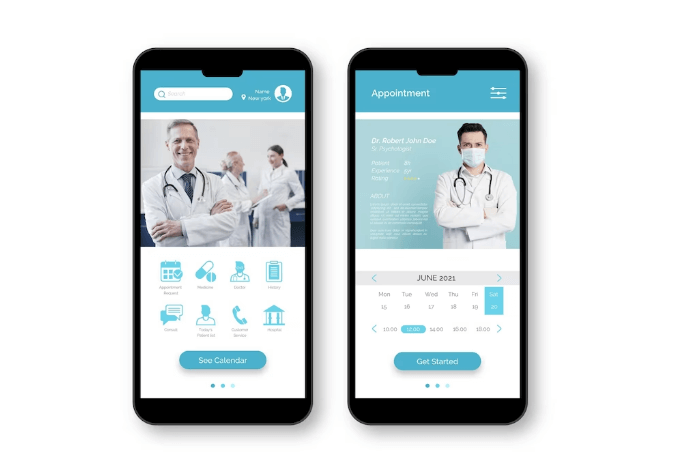Are you tired of clunky and confusing medical equipment? Have you ever left a doctor’s office feeling more frustrated than informed? Well, that’s all about to change thanks to UX design! The field of user experience is revolutionizing the medical industry by creating intuitive and seamless interfaces for patients, doctors, and healthcare professionals. In this blog post, we’ll explore how UX design is transforming the way we approach healthcare and why it’s important now more than ever. So sit back, relax, and get ready to discover how technology is making our lives easier in ways we never thought possible!
What is UX Design?
UX design is all about creating the best possible experience for users of a product or service. In the medical industry, this means creating products and services that are easy to use, efficient, and effective.
The goal of UX design is to make sure that patients and medical professionals have the best possible experience when using a product or service. This includes making sure that products are easy to use and effective at solving problems.
With the increasing popularity of smartphones and other mobile devices, UX for medical devices are increasingly focused on creating apps and websites that are easy to use on these smaller screens. This is especially important in the medical industry, where patients may need to access information quickly and easily while on the go.
In addition to making products more user-friendly, UX designers also work to make them more efficient and effective. This can involve streamlining processes, improving workflow, and making sure that information is presented in a way that is easy to understand.
By focusing on the user experience, UX designers are able to create products that are not only easier to use, but also more likely to be used effectively. This is revolutionizing the medical industry by making it easier for patients to get the care they need and improving outcomes for everyone involved.
How UX Design has Revolutionized the Medical Industry
UX design has revolutionized the medical industry by making information more accessible to patients and doctors alike. By designing user-friendly interfaces, UX designers have made it possible for patients to easily access their medical records and doctors to quickly find the information they need. This has led to a more efficient and effective healthcare system overall.
Benefits of Using UX Design for Medical Professionals
medical professionals are always looking for ways to improve patient care and increase efficiency. One way that they are doing this is by using UX design principles to create better user experiences for both patients and staff. Some of the benefits of using UX design in healthcare include:
1. Improved patient outcomes: When patients have a positive experience with their care, they are more likely to adhere to treatment plans and take their medication as prescribed.
2. Increased staff satisfaction and retention: Healthcare can be a high-stress environment. By making the user experience better for staff, you can help them feel more satisfied with their jobs and less likely to leave the industry.
3. Enhanced patient safety: One of the most important aspects of healthcare is keeping patients safe. By streamlining processes and making information easy to find, you can help reduce errors and improve patient safety.
4. Reduced costs: Improving efficiency within the healthcare system can lead to reduced costs for both patients and providers. This is especially important as the cost of healthcare continues to rise.
5. Better data collection and analysis: In order to make informed decisions about patient care, medical professionals need access to accurate data. UX design can help improve data collection and analysis, leading to better decision-making overall.
Examples of UX Design in the Medical Field
UX design in the medical field is revolutionizing the way healthcare is delivered. By putting the patient at the center of the design process, UX designers are creating solutions that are more user-friendly, efficient, and effective.
One example of how UX design is improving healthcare is by streamlining the registration process. In many hospitals, patients must fill out paperwork upon arrival which can be time-consuming and confusing. However, some hospitals are now using digital registration kiosks that allow patients to quickly and easily input their information. This not only saves time for both patients and staff, but it also reduces errors and increases satisfaction.
Another example of how UX design is being used in healthcare is to develop better hospital websites. Many hospital websites are outdated and difficult to navigate, making it hard for patients to find the information they need. However, by using UX best practices, hospital websites can be designed to be more user-friendly and informative. This can help patients make better decisions about their health care and improve overall satisfaction with their experience.
In addition to these examples, there are many other ways that UX designers are making a difference in healthcare. From developing apps that help patients track their symptoms to designing devices that make it easier for doctors to access patient records, UX designers are constantly finding new ways to improve the delivery of healthcare.
Challenges of Implementing UX Design in Healthcare
Designing for healthcare presents unique challenges that must be considered in order to create effective solutions. One of the most important factors to keep in mind is the user’s level of comfort with technology. In many cases, health care providers are working with patients who may not be familiar with using digital tools and interfaces. This can present a barrier to adoption, even if the overall design is user-friendly.
Another challenge is the need to account for regulatory requirements when designing healthcare applications. In the United States, there are numerous federal regulations that must be adhered to, including those related to patient privacy (HIPAA). This can make it difficult to create truly innovative solutions, as they must first meet all compliance standards.
Finally, it’s important to consider the user’s environment when designing for healthcare. Patients may be using your solution while in a hospital or doctor’s office, or they may be accessing it from home. Each environment has its own set of challenges, such as distractions or limited time, that must be taken into account.
Conclusion
UX design is revolutionizing the medical industry, making it easier and more efficient for both healthcare professionals and patients alike. With its emphasis on user-centered design principles, UX design can help to create tools that are easy to use, intuitive, and effective. As technology continues to progress with each passing year, UX design will no doubt continue to be an integral part of the medical industry’s success. Healthcare providers should strive to embrace modern techniques in order to provide better patient outcomes and experiences.




